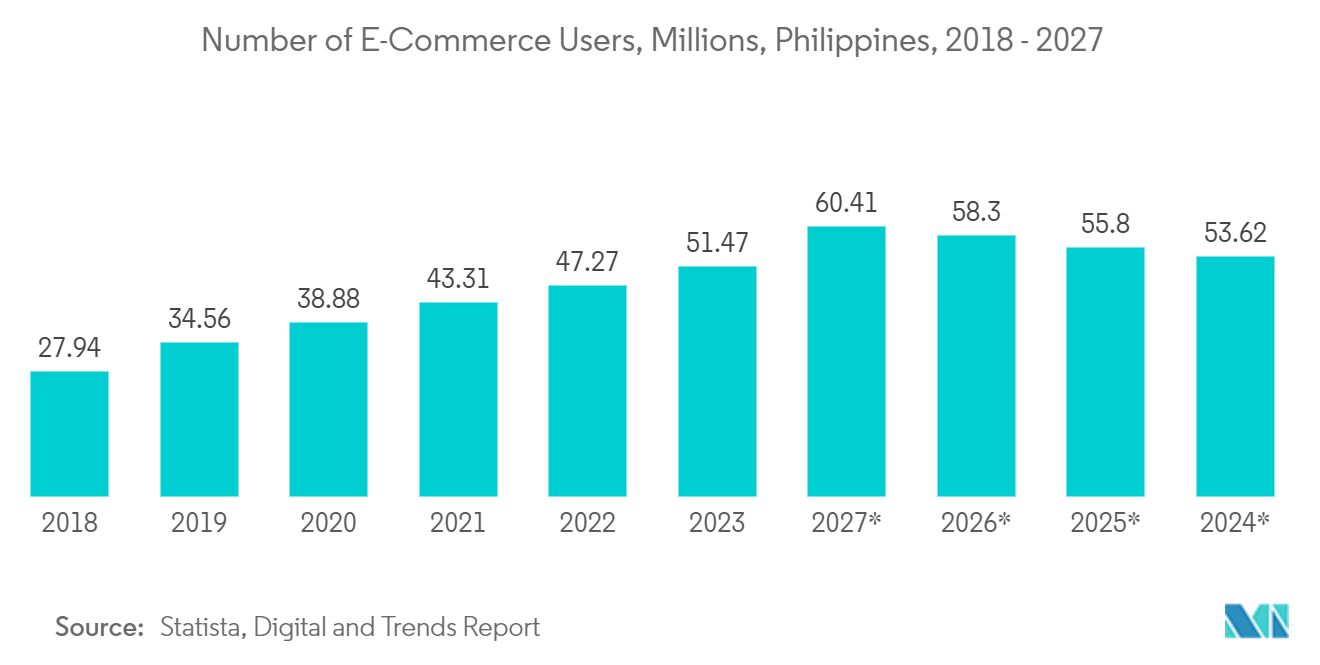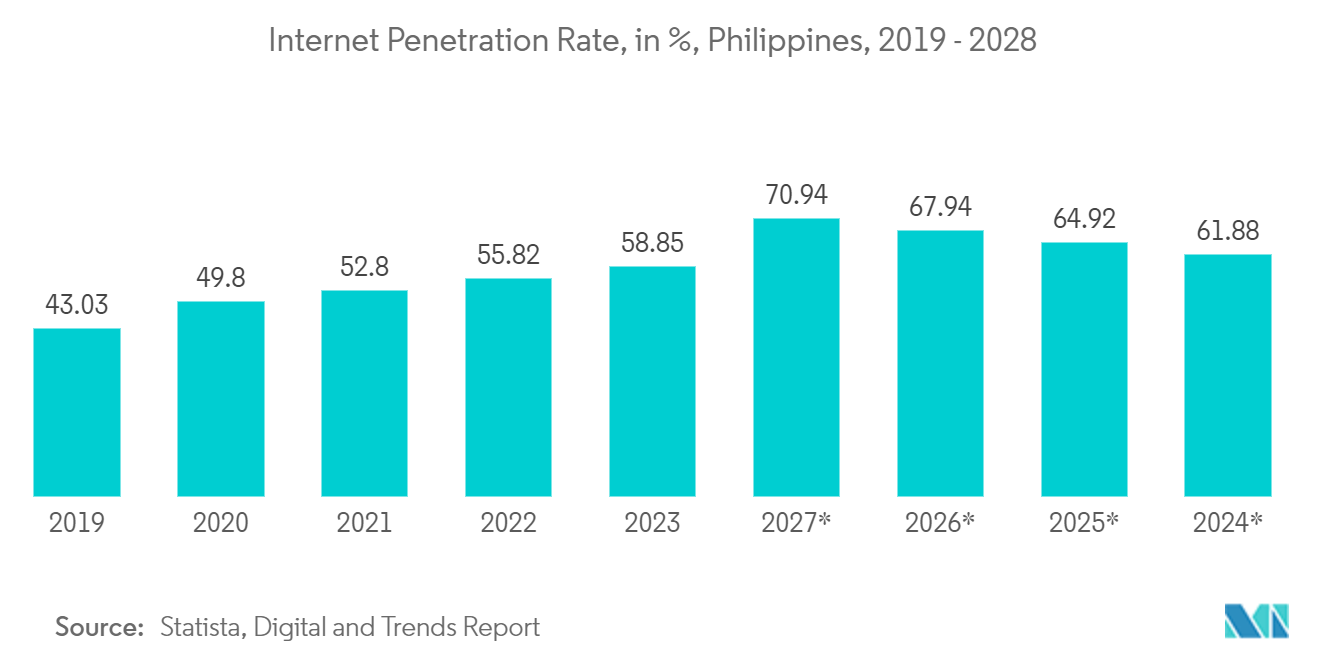Market Trends of Philippines Data Center Cooling Industry
Liquid-based Cooling is the Fastest Growing Segment
- Liquid cooling takes advantage of the superior heat transfer properties of water or other liquids to support efficient and cost-effective cooling of high-density racks, up to 3000 times more effective than using air. Long proven in mainframe and gaming applications, liquid cooling is increasingly being used to protect rack servers in data centers across the region.
- Direct liquid cooling solutions consistently deliver impressive partial power usage effectiveness (PUE) ranging from 1.02 to 1.03, surpassing the efficiency of even the most efficient air cooling systems by a marginal single-digit percentage. It's essential to note, however, that a significant portion of the energy efficiency improvement attributed to DLC is not reflected in the PUE metric. This is due to the fact that traditional servers incorporate fans that draw power from the rack, and their control mechanisms are factored into the IT power consumption portion of the PUE calculation. These fan power requirements are considered part of the data center's overall payload.
- Technological advances have made liquid cooling easier to maintain, more scalable, and more affordable, reducing data center liquid consumption by more than 15% in tropical climates and by 80% in greener areas. The energy used for liquid cooling can be recycled to heat buildings and water, and advanced artificial refrigerants can effectively reduce the carbon footprint of air conditioners.
- Further, the demand for online shopping has increased considerably post-pandemic. Cashless payments, product quality, and shopping at the convenience of the home have increased the demand proportionally for these online ecommerce platforms. The leading online eCommerce platforms are Shopee, Lazada, Zalora, and BeautyMNL. The Philippine ecommerce market is expected to increase from USD 17 billion to USD 24 billion by 2025. Thus, growing data consumption and the need for storage would increase data center facilities in the country.

IT & Telecommunication is the Largest Segment
- The ICT sector includes both IT and telecommunications markets. IT investment is on the rise, and the demand for the ICT market is expected to grow significantly over the next five years. According to the Department of International Trade, Philippine software services sales are expected to reach USD 95 million by 2025.
- According to Oracle, the Philippines recorded a 7.23% share in IT recruitment activity in August 2022, up 22.09% from July 2022. This shows that the IT department is growing. For example, in March 2022, Microsoft launched the Microsoft for Startups Founders Hub to boost startup ambition and drive innovation to foster economic and social progress in Asia and the rest of the world. Such efforts by the ICT market giants will help IT startups enter the Philippine ICT market to develop new hardware, software, and services.
- Cyberattacks are expected to continue to increase over the next five years. Advances in IT operations protect the ICT market from cyberattacks. As cloud-based platforms and enterprise software provide real-time data, they create greater value for businesses, especially by providing remote access. For example, Microsoft has introduced new and enhanced security services under a new service category known as "Microsoft Enterprise Security Professionals."
- Given the increasing digital adoption, Alibaba Cloud Intelligence intends to invest more in the Philippines after opening a data center. Allen Guo, the country manager for the giant technology firm, said at a press conference in Makati that the company was considering expanding the capacity of its data center to accommodate the growing use of digital platforms. Around 88% of the companies use cloud-based solutions in the Philippines. The growing demand for analytics and software for business purposes by the public and private industries is expected to boost the growth of the segment.


